 January 13, 2022 John E. Ross, KD8IDJ, Editor
| ||||||||||||||||||||
The ARRL National Convention & Orlando HamCation® is February 10 - 13, 2022. Register at www.arrl.org/expo. ARRL Foundation to Create Club Grants Program A new ARRL Foundation Club Grants program, funded by a grant from Amateur Radio Digital Communications (ARDC), will make $500,000 available to radio clubs. The program will provide up to $25,000 for ARRL has long recognized that it is in the best interests of amateur radio to encourage and support amateur radio clubs. Clubs historically have recruited, licensed, and trained new radio amateurs and have provided the community setting for radio amateurs to continue their education and training. The new Club Grants program will help clubs to more easily provide and expand their important services. Beginning in April 2022, amateur radio clubs will be able to apply for these grants by filling out a simple form on the ARRL website. The ARRL Foundation will evaluate the grant proposals. The Foundation was established in 1973 to advance the art, science, and societal benefits of the amateur radio service by awarding financial grants and scholarships to individuals and organizations in support of their charitable, educational, and scientific efforts. A key criterion for determining awards will be how the project will advance amateur radio in the grantee's community. In most cases, this process should take no longer than 90 days. ARRL Foundation President David Woolweaver, K5RAV, shared his enthusiasm about this new program. "This program will substantially contribute to the growth of amateur radio clubs and their efforts to expand and support the amateur radio community," he said.
"We're very excited about working with the ARRL Foundation on this program," said Schechter. "We can't wait to see what kinds of creative things clubs will do with these grants." -- Thanks to ARDC ARISS Highlighted among NASA's Best Space Station Science Pictures of 2021 NASA has recognized Amateur Radio on the International Space Station (ARISS) as a science education and research program. Two images of ARISS activity are among those singled out by the space
agency as some of the Best Space Station Science Pictures of 2021. ARRL Representative to ARISS-International Rosalie White, K1STO, said recognition is significant because it shows that NASA considers the ARISS program to be within the realm of science education and research. "Actually, it's an honor for amateur radio, too, that this program is categorized as science education and research," White added. "This is a really big deal for ARISS, and we are really proud of the team." White feels the most important aspect of the recognition is that it shows that NASA believes in ARISS's efforts in the realm of science education and research. "They call our radio contacts 'ISS experiments,' just as we call each radio contact an ARISS experiment," she said.
The introduction to the new video, which NASA shared on Twitter, is, "It has been a busy year of research aboard the International Space Station. NASA's SpaceX Crew-1, Crew-2, and Crew-3 missions supported hundreds of science experiments aboard the orbiting laboratory." ARISS team member Armand Budzianowski, SP3QFE, wrote, "It is phenomenal that we were honored as creating science. It is a proud moment that ARISS and amateur radio were honored for the field of science and research by NASA!" NASA also shared the photos on its website. ARRL Podcasts Schedule
The latest edition of the Eclectic Tech podcast (Episode 51) features a chat with H.P. The On the Air and Eclectic Tech podcasts are sponsored by Icom. Both podcasts are available on iTunes (iOS) and Stitcher (Android) as well as on Blubrry -- On the Air | Eclectic Tech. Growing Number of Operators Completing WAS on 222 MHz Until very recently, it had been some 35 years since the most recent Worked All States (WAS) was awarded on 1.25 meters. Former ARRL President Joel Harrison, W5ZN, in Arkansas; Marshall Williams, K5QE, in Texas, and John Swiniarski, K1OR, in New Hampshire stand at the vanguard of a new generation of VHF enthusiasts aiming at earning the Worked All States (WAS) Award on 222 MHz (1.25 meters). Harrison was issued WAS #11 on 1.25 meters on December 27, 2021, while Williams was issued WAS #12 on January 11, 2022, and Swiniarski was issued WAS #13 on January 12. "Since the 1980s, a combination of the old guard and a new group have been pursuing this quest," ARRL Radiosport Manager Bart
Jahnke, W9JJ, said. Harrison worked Tom Worthington, NH6Y, in Hawaii, for his 50th state, while Williams followed close behind, working James Colson, K7KQA, operating EME portable from Oregon, for his 50th state. Jahnke said the honor of being the very first 1.25-meter WAS recipient went to Terry Van Benschoten, W0VB, in 1983, earning what was then "220 MHz WAS." Nine others joined the ranks between then and 1987. "In recent years, several stations have been working hard toward joining the ranks of WAS holders on this ITU Region 2-only band," Jahnke said. Other stations that have recently worked 50 states and waiting on the last confirmations include K1WHS and WA4NJP. N9HF and N0AKC are nipping at their heels. No activity on 1.25 meters was available in some of the last few needed states, and portable operations by KA6U, KB7Q, K7KQA, and N7GP made contacts possible. "Congratulations to [the recent award recipients], and to all those VHF+ state chasers -- and to the many activators of rare 222 MHz states -- on their achievements in this continuing quest for 222 MHz Worked All States," Jahnke said. In 1988, when the FCC reallocated the lower portion (220 - 222 MHz) of the 1.25-meter band to the federal government and Land Mobile Service, amateur activity on the band stalled, while adjustments were made to equipment and band plans. During the past several years, so-called "weak-signal" activity, especially EME, has increased on the band with a renewed interest from existing and new band users. Amateurs interested in staying abreast of 222 MHz activity can follow the fun on the 222 MHz Activity Reflector. Harrison, Charlie Betz, N0AKC, and Al Ward, W5LUA, have written an article, "The Quest for 222 MHz WAS," which contains tables, maps, and details on the propagation, locations, and equipment that made their operations possible. Ward was among the initial 10 WAS recipients for 1.25 meters. Plans call for the paper to be presented and published by the Central States VHF Society Conference in La Crosse, Wisconsin, July 29 - 30 and at other conferences. Harrison said, the paper also has "lots of history in it about the 1.25-meter band, the original 10, and the group now in the hunt along with ongoing 'roving' efforts of KB7Q and KA6U." Amateur Radio in the News ARRL Public Information Officers, Coordinators, and many other member-volunteers help keep amateur radio and ARRL in the news.
Share any amateur radio media hits you spot with us. Dick Fyjlstra, PA0DFN, is 2022 Carole Perry Educator of the Year The Orlando HamCation has announced that Dick Fyjlstra, PA0DFN, is the 2022 recipient of the Carole Perry Educator of the Year Award. The award recognizes an outstanding contribution to education and advancing youth in amateur radio. It was first awarded in 2018 to its namesake, Carole Perry, WB2MGP, to recognize her work in teaching students about ham radio. Orlando HamCation and ARRL are sponsoring the 2022 ARRL National Convention, February 10 - 13. Perry is a past Dayton Hamvention® Amateur of the Year and a Fyjlstra is the first international winner of the Carole Perry Educator of the Year Award. A retired school principal, he has worked for years to reach out to youth with the latest technology to ham radio. At ham radio events, he helps groups of youngsters in building electronic projects, guiding groups of other hams to assist them to finish the projects correctly. He also has organized international school projects, including the Communication Helps International Progress (CHIP) program, with participating schools throughout Europe. Fyjlstra is the Netherlands' International Amateur Radio Union (IARU) member-society VERON's Region 1 Amateur Radio Direction Finding Committee (ARDF) Working Group member. It focuses on the European Youth ARDF Championships on transmitter hunting activities and competitions. Fyjlstra also of very active in ARDF. -- Thanks to HamCation Eight US Schools and Organizations Could Host Ham Radio Contacts with Space Station Crew Amateur Radio on the International Space Station (ARISS) has announced the schools and organizations hoping to host ham radio contacts with an International Space Station (ISS) crew member. Contacts would take place between July 1 and December 31. Eight of the proposals submitted during the recent proposal window have been The ARISS program anticipates that NASA will be able to offer scheduling opportunities for all eight hosting schools and organizations during the second half of the year. Final selection is pending on the receipt by ARISS of an acceptable equipment plan that demonstrates their ability to execute the ham radio contact. Once their equipment plan is approved by ARISS Technical Mentors, the final selected schools/organizations will be scheduled as their availability and flexibility match up with the scheduling opportunities offered by NASA. The schools and host organizations are:
ARISS is a cooperative venture of international amateur radio societies and the space agencies that support the ISS. US sponsors are AMSAT, ARRL, the ISS National Laboratory Space Station Explorers, and NASA's Space Communications and Navigation Program (SCaN). Before and during radio contacts with ISS crew members, students, educators, parents, and communities take part in hands-on learning activities tied to space, space technologies, and amateur radio. Visit the ARISS website for more information. Announcements
China is Expanding its South China Sea Antenna Farms A December 17 commentary from the Center for Strategic and International Studies (CSIS) has concluded that over the past year China has taken "major steps" to upgrade its capability to wage electronic warfare near the South China Sea." CSIS cites satellite images of massive antenna complexes to back its claim. Some "The Chinese military is taking major steps toward improving its electronic warfare, communications, and intelligence-gathering capabilities near the South China Sea," said the commentary by Matthew P. Funaiole, Joseph S. Bermudez Jr., and Brian Hart, all associated with CSIS. "Recent satellite imagery reveals that China has rapidly expanded facilities near Mumian, on Hainan Island, providing the People's Liberation Army (PLA) with greater ability to track and counter foreign military forces operating in the region and in outer space." The commentary said, "Many assets in the vicinity appear dedicated to gathering communications intelligence, a subset of [signals intelligence] that includes the collection of communications between individuals and organizations." Some of China's land claims in the South China Sea include rare DXCC entities. Scarborough Reef (Panatag Shoal) is one. Conflicting land claims exist for other islands, especially in the Spratlys. Further complicating the situation is a 2016 ruling from the Permanent Court of Arbitration in the Hague that discounted China's claims with respect to Scarborough Reef and the Spratlys. The Court ruled in favor of the Philippines in a dispute with China over Scarborough Reef. In April 2015, a Chinese naval vessel "harassed a Philippine Air Force patrol flight in the Spratlys," according to one news account, by firing an illumination round. The incident postponed a Philippine Navy flight that was to evacuate an ailing participant of the DX0P Spratly Islands DXpedition. A private aircraft carrying a BBC reporter received radio warnings from the Chinese Navy to stay away from the South China Sea reefs and islands that China claims, strongly suggesting that This and the more recent artificial island-building in the South China Sea cloud the possibility of future DXpedition to rare DXCC entities in the South China Sea, whether or not China has laid specific claim. The Spratlys are claimed in whole or in part by China, the Philippines, Vietnam, and other countries, and the Philippines government had issued the DX0P call sign. An international amateur radio team postponed a December 2017 DXpedition to the Spratly Islands operating under Malaysian call sign 9M0W, although the DXpedition did take place the following year. The planned 2012 DX0DX DXpedition to the Spratlys was canceled altogether without explanation after being pushed back at least twice. The last operation from Scarborough Reef was in 2007. In Brief...
The K7RA Solar Update Tad Cook, K7RA, Seattle, reports: Two new sunspot groups emerged on January 9 and another showed up on January 12. Average daily sunspot numbers rose six points this week to 42.4, and average daily solar flux increased from 91.4 to 101.6. Geomagnetic indicators were quieter, with average daily planetary A index declining from 7.7 to 6.1, and average daily middle latitude A The higher A index values on January 8 and 9 were from a G-1 class storm caused by co-rotating interaction regions. Predicted solar flux for the next month shows values peaking at 120 on January 21 - 24 and again around mid-February. Predicted values are 104 and 106 on January 13 - 14; 108 on January 15 - 17; 106 on January 18 - 20; 120 on January 21 - 24; 110 on January 25; 100 on January 26 - 27; 95 and 90 on January 28 - 29; 85 on January 30 - February 1; 95 and 105 on February 2 - 3; 100 on February 4 - 5; 102 on February 6 - 7; 105 on February 8; 110 on February 9 - 10; 115 on February 11 - 12, and 120 on February 13 - 20. Predicted planetary A index is 5 on January 13 - 14;14, 24, 12, and 8 on January 15 - 18; 5 on January 19 - 22; 10 on January 23; 8 on January 24 - 26; 5 on January 27; 10 on January 28 - 30; 5 on January 31 - February 3; 15, 10, and 8 on February 4 - 6; 5 on February 7 - 11; 12, 10, and 8 on February 12 - 14, and 5 on February 15 - 18. Sunspot numbers for January 6 through 12 were 35, 38, 31, 36, 38, 51, and 68, with a mean of 42.4. The 10.7-centimeter flux was 93.7, 107.3, 102.4, 102.1, 102.2, 100, and 103.2, with a mean of 101.6. Estimated planetary A indices were 2, 2, 14, 10, 6, 5, and 4, with a mean of 6.1. Middle latitude A index was 2, 1, 9, 7, 4, 3, and 3, with a mean of 4.1. A comprehensive K7RA Solar Update is posted Fridays on the ARRL website. For more information concerning radio propagation, visit the ARRL Technical Information Service, read "What the Numbers Mean...," and check out the Propagation Page of Carl Luetzelschwab, K9LA. A propagation bulletin archive is available. For customizable propagation charts, visit the VOACAP Online for Ham Radio website. Share your reports and observations. Just Ahead in Radiosport
Upcoming Section, State, and Division Conventions
Search the ARRL Hamfest and Convention Database to find events in your area. ARRL -- Your One-Stop Resource for
Subscribe to...
Free of charge to ARRL members...
| ||||||||||||||||||||
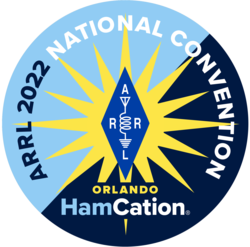
.jpg) worthy club projects. Requests for more than that will be referred back to ARDC.
worthy club projects. Requests for more than that will be referred back to ARDC..jpg) ARDC is a California-based foundation that awards grants to projects and organizations that follow amateur radio's practice and tradition of technical experimentation in both amateur radio and digital communication science. ARDC Executive Director Rosy Schechter, KJ7RYV, noted that this program will streamline the process for getting club projects funded, so that clubs can get started on these projects more quickly.
ARDC is a California-based foundation that awards grants to projects and organizations that follow amateur radio's practice and tradition of technical experimentation in both amateur radio and digital communication science. ARDC Executive Director Rosy Schechter, KJ7RYV, noted that this program will streamline the process for getting club projects funded, so that clubs can get started on these projects more quickly.

.jpg) The latest episode of the On the Air podcast (Episode 25) features a conversation with Michael Fluegemann, KE8AQW, about how to get started with CW.
The latest episode of the On the Air podcast (Episode 25) features a conversation with Michael Fluegemann, KE8AQW, about how to get started with CW..jpg) Friedrichs, AC7ZL, about his new book Marvelous Magnetic Machines and the pleasures of "extreme homebrewing."
Friedrichs, AC7ZL, about his new book Marvelous Magnetic Machines and the pleasures of "extreme homebrewing."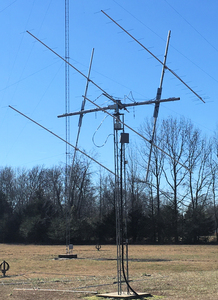
.jpg) recipient of the ARRL Instructor of the Year Award. She has moderated the Hamvention® Youth Forum for more than 3 decades.
recipient of the ARRL Instructor of the Year Award. She has moderated the Hamvention® Youth Forum for more than 3 decades..jpg) accepted to move forward in the selection processes. The primary goal of the ARISS program is to engage young people in science, technology, engineering, arts, and mathematics (STEAM) activities, and to raise their awareness of space communications, radio communications, space exploration, and related areas of study and career possibilities.
accepted to move forward in the selection processes. The primary goal of the ARISS program is to engage young people in science, technology, engineering, arts, and mathematics (STEAM) activities, and to raise their awareness of space communications, radio communications, space exploration, and related areas of study and career possibilities.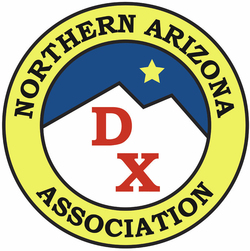 The Northern Arizona DX Association (
The Northern Arizona DX Association (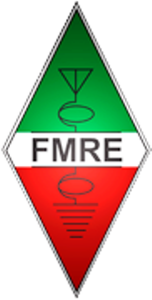
 facilities have already been suspected of jamming the communication facilities of US military aircraft operating in the region.
facilities have already been suspected of jamming the communication facilities of US military aircraft operating in the region. China has expanded its sphere of influence to include the entire region.
China has expanded its sphere of influence to include the entire region. The 2022 running of the popular International DX Convention (
The 2022 running of the popular International DX Convention (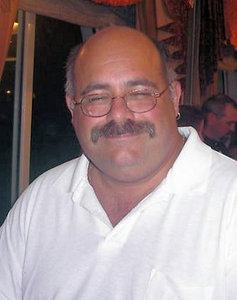 Joseph M. Grib, Jr., KI3B, has been appointed Delaware Section Manager (SM) on an interim basis. A DuPont retiree, Grib lives in Bear, Delaware, and is active in the local repeater association. Outside of ham radio, he enjoys saltwater fishing, the beach, and computers. Grib is an avid CW operator but enjoys other modes as well, including SSB, DMR (Digital Mobile Radio), and D-STAR (Digital Smart Technology for Amateur Radio). Grib's appointment was effective on December 31, 2021, when the term of former SM Mark Stillman, KA3JUJ, ended. Grib will serve in the role at least until July 1, 2022. ARRL is soliciting candidates for Delaware SM, and nominating petitions are due by March 4, 2022.
Joseph M. Grib, Jr., KI3B, has been appointed Delaware Section Manager (SM) on an interim basis. A DuPont retiree, Grib lives in Bear, Delaware, and is active in the local repeater association. Outside of ham radio, he enjoys saltwater fishing, the beach, and computers. Grib is an avid CW operator but enjoys other modes as well, including SSB, DMR (Digital Mobile Radio), and D-STAR (Digital Smart Technology for Amateur Radio). Grib's appointment was effective on December 31, 2021, when the term of former SM Mark Stillman, KA3JUJ, ended. Grib will serve in the role at least until July 1, 2022. ARRL is soliciting candidates for Delaware SM, and nominating petitions are due by March 4, 2022..jpg) Dexter Anderson, W1STN (ex-W2YLN, -K3KWJ, and -W4KM), of Mystic, Connecticut, died on December 21. An ARRL Life Member, he was 90. Anderson, who traveled the world for his role with the US Foreign Service (USFS), translated Russian ham radio articles for ARRL and others. First licensed in 1948 as W2YLN in New Jersey, he graduated from Yale University, then obtained an MS from The George Washington University. USFS assignments took him to West Germany (DL4QA), the Soviet Union, Cameroon, and Switzerland (HB9BRQ). After retiring from the US Department of State, he worked for the Voice of America. He was a Life Member of AMSAT, as well as a member of the US Department of State Amateur Radio Club, W3DOS, and the Voice of America Amateur Radio Club, K3VOA. In the late 1970s, he volunteered at the Smithsonian Amateur Radio Group's, NN3SI, station at the Smithsonian Institution. He also operated from 4U1ITU.
Dexter Anderson, W1STN (ex-W2YLN, -K3KWJ, and -W4KM), of Mystic, Connecticut, died on December 21. An ARRL Life Member, he was 90. Anderson, who traveled the world for his role with the US Foreign Service (USFS), translated Russian ham radio articles for ARRL and others. First licensed in 1948 as W2YLN in New Jersey, he graduated from Yale University, then obtained an MS from The George Washington University. USFS assignments took him to West Germany (DL4QA), the Soviet Union, Cameroon, and Switzerland (HB9BRQ). After retiring from the US Department of State, he worked for the Voice of America. He was a Life Member of AMSAT, as well as a member of the US Department of State Amateur Radio Club, W3DOS, and the Voice of America Amateur Radio Club, K3VOA. In the late 1970s, he volunteered at the Smithsonian Amateur Radio Group's, NN3SI, station at the Smithsonian Institution. He also operated from 4U1ITU.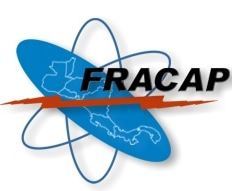 The 61st convention of the Federation of Amateur Radio Clubs of Central American and Panama (FRACAP) met in virtual session on November 5. General Secretary José Arturo Molina, YS1MS, moderated the gathering, attended by more than 50 representatives from 11 countries. Complementing the routine working sessions were presentations on topics such as the future of amateur radio, satellites, and portable operations in HF and during emergencies. The website of the Amateur Radio Club of El Salvador (
The 61st convention of the Federation of Amateur Radio Clubs of Central American and Panama (FRACAP) met in virtual session on November 5. General Secretary José Arturo Molina, YS1MS, moderated the gathering, attended by more than 50 representatives from 11 countries. Complementing the routine working sessions were presentations on topics such as the future of amateur radio, satellites, and portable operations in HF and during emergencies. The website of the Amateur Radio Club of El Salvador (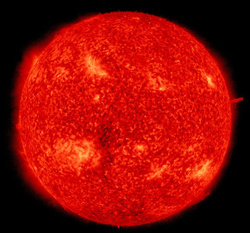 index from 6 to 4.1.
index from 6 to 4.1.







